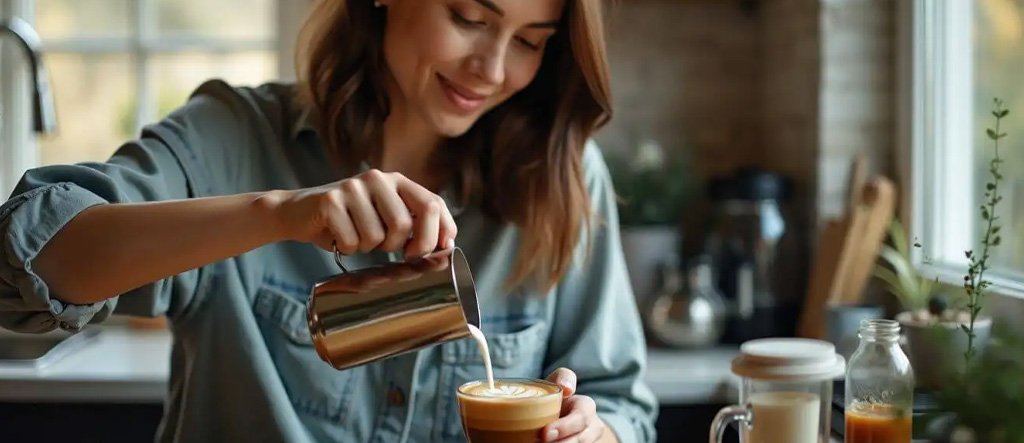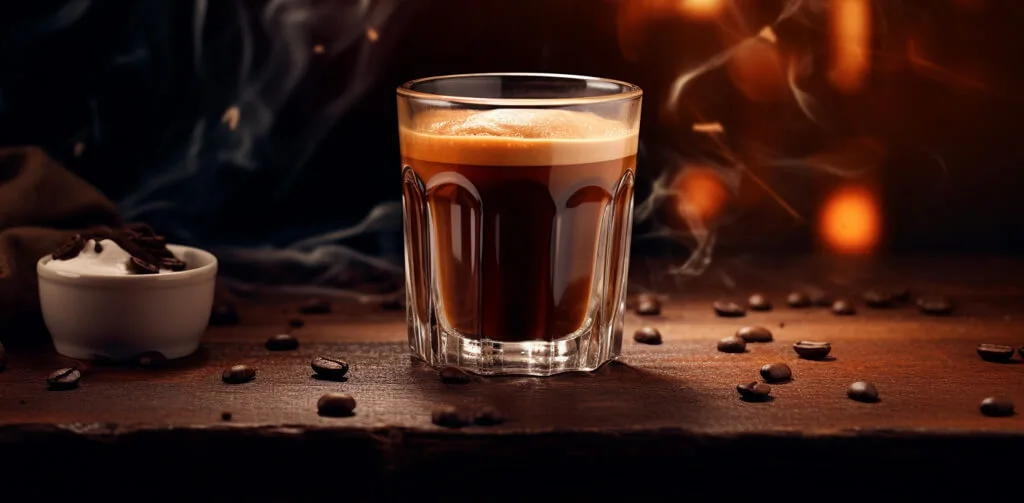Many people start their day with a cup of coffee. For some, making a perfect latte at home seems hard. A latte is more than just espresso and steamed milk. It’s about how these ingredients blend together.
One fact: Lattes have become one of the most popular espresso-based drinks worldwide. This blog will guide you on making the best latte right at your home kitchen. From choosing the right kind of milk to mastering latte art, we’ve got you covered.
Read on to learn how to make your lattes better than ever. Your mornings are about to get tastier!
What is a Latte?
A latte is a coffee drink made with a shot of espresso and steamed milk, often topped with a layer of frothed milk. The combination of espresso and steamed milk gives lattes their smooth and creamy texture, making them a popular choice among coffee enthusiasts.
Definition and basic composition
A latte blends steamed milk with a shot of espresso. This coffee drink mixes microfoam from the milk with espresso to create a smooth, rich beverage. The ratio of milk to coffee in a latte is higher compared to other espresso-based beverages like cappuccino or macchiato, making it creamier and less intense.
Crafting the perfect latte requires skill in both espresso extraction and milk frothing.
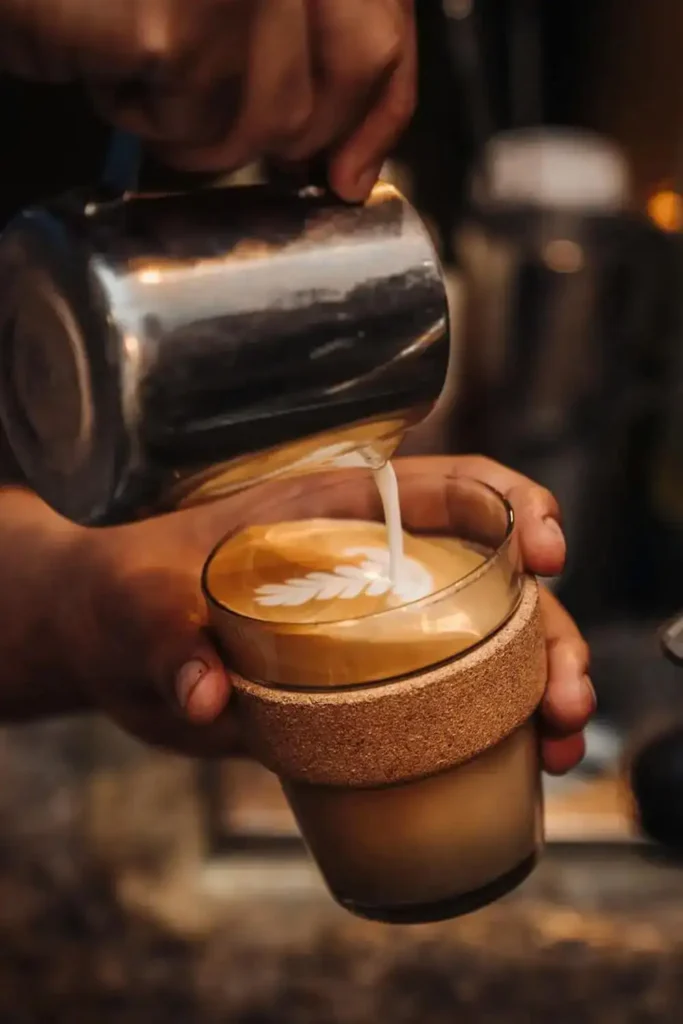
Crafting the Perfect Latte
Making the perfect latte involves sourcing high-quality espresso, steaming milk to achieve velvety microfoam, and skillfully layering the espresso and milk. To learn more about creating the perfect latte, read on.
Espresso quality and preparation
To make a great latte, you need high-quality espresso. This starts with choosing the right coffee beans. Arabica beans are best for their smooth flavor. The grind of the bean matters too; it should be fine, but not too powdery.
Next comes the espresso machine and its settings. You should set it to extract a shot between 25 and 30 seconds. This timing ensures that all flavors get pulled from the grounds without any bitterness.
Baristas must pay close attention while preparing espresso shots. They use about 18 to 20 grams of coffee for each shot. Water temperature is crucial as well; it should be around 200 degrees Fahrenheit to properly extract flavors from the ground coffee.
Keeping these factors in mind guarantees top-notch espresso every time, setting the foundation for an exceptional latte experience.
Milk selection and steaming techniques
Choosing the right milk for a latte is key. Whole milk gives a creamy texture that enhances the coffee’s body, making it the preferred choice for many baristas and coffee drinkers alike.
Some prefer alternatives like almond or soy milk, which offer different flavors and textures, but may alter the traditional latte experience slightly. The type of milk affects how well it steams and integrates with the espresso to create a smooth blend.
Steaming milk to perfection requires skill. A barista aims for microfoam: tiny bubbles that make the milk silky and rich. They heat the milk to between 150°F and 155°F, keeping an eye not to scorch it while swirling it constantly to achieve even heating and froth distribution.
This technique ensures that when poured into espresso, the steamed milk lends a velvety texture conducive for crafting beautiful latte art on top.
The art of steaming lies in creating perfect microfoam – it turns good coffee into great ones.
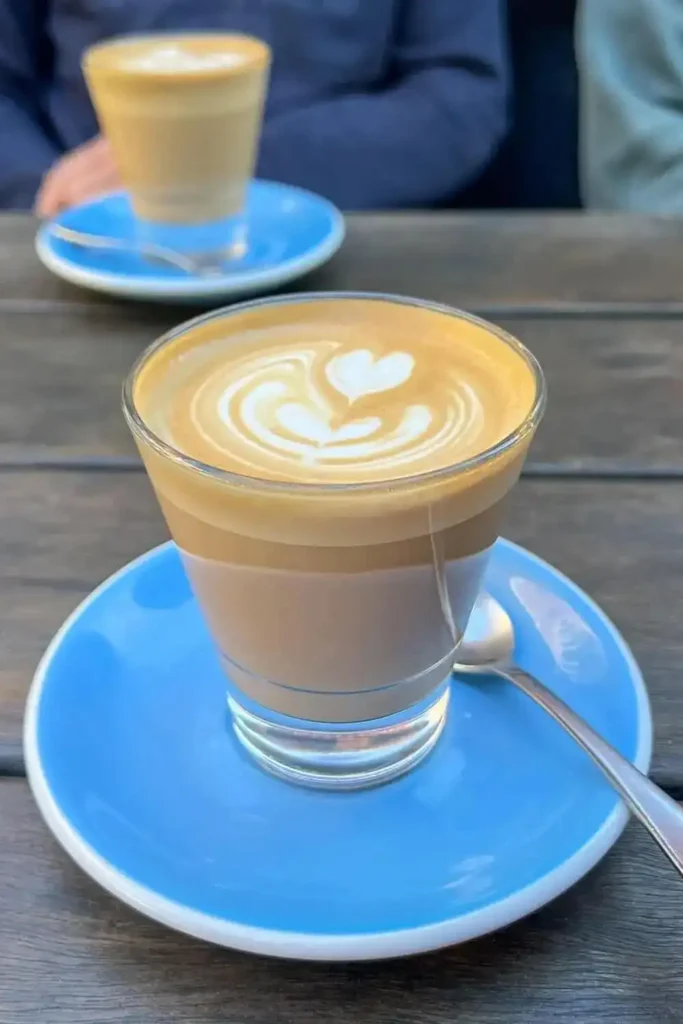
Layering of espresso and milk
The layering of espresso and steamed milk is essential in crafting a delightful latte. This process involves carefully pouring the rich, aromatic espresso into a serving glass followed by gently adding velvety steamed milk on top.
The result is a visually appealing beverage with distinct layers that offer a perfect balance of bold espresso and creamy milk, creating an overall smooth texture and satisfying flavor.
Precision plays a significant role in achieving impeccable layering as baristas aim to create an enticing visual appeal while maintaining the harmonious blend of espresso and milk.
The skillful technique not only enhances the aesthetic charm of the latte but also ensures that each sip delivers an exquisite fusion of flavors, making every latte experience truly delightful for coffee enthusiasts.
Variations of Lattes
Crafting a delectable variety of latte encompasses exploring an array of flavored syrups and unique additions. Exploring alternative milk options can open up new avenues for creating diverse and innovative interpretations of this classic espresso-based beverage.
Flavored syrups and additions
Lattes are versatile and offer the option to personalize with flavored syrups like vanilla, caramel, hazelnut, and seasonal choices such as pumpkin spice. These additions provide a sweet twist to the drink while complementing the rich flavor of the espresso.
For those seeking to enhance their latte experience or cater to various tastes, incorporating flavors like mocha or peppermint can create delightful variations that attract a wider customer base.
Some coffee enthusiasts enjoy enhancing lattes with chocolate shavings or a sprinkle of cinnamon to add visual appeal and aromatic depth. Moreover, integrating ingredients like Irish cream or almond extract into the mix can lead to unique signature drinks that distinguish establishments from their competitors.
Alternative milk options
Transitioning from flavored syrups and additions, alternative milk options offer a diverse range of choices for crafting lattes to suit individual preferences. Non-dairy milk alternatives like almond, oat, and soy have gained popularity due to their lactose-free nature and distinctive flavors.
Almond milk, with its nutty undertones, pairs well with the robust flavor of espresso shots while oat milk’s creamy texture adds a smooth touch to lattes. Soy milk is known for its ability to produce frothy microfoam which complements the indulgent essence of a traditional latte.
These alternative options cater to those with dietary restrictions and offer unique taste profiles that can elevate the overall sensory experience of enjoying a perfectly crafted latte.
Whether it’s enhancing the richness or adding subtle nuances, alternative milks are an excellent addition to the world of espresso-based beverages.
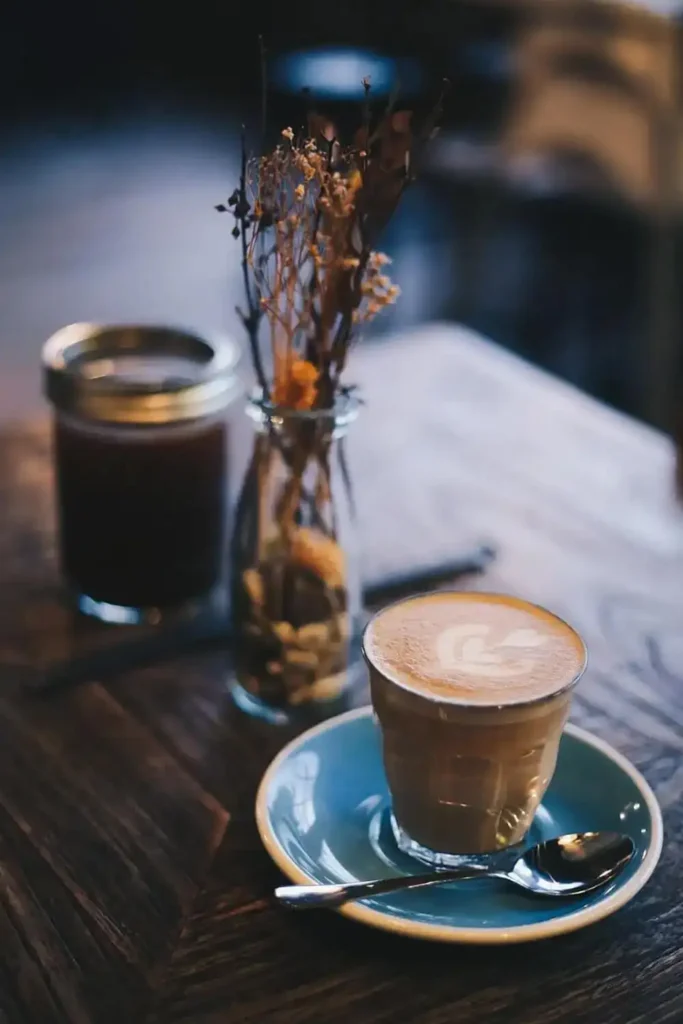
Serving and Presentation
Crafting the perfect latte goes beyond taste – it’s about creating a visually appealing experience for your palate. The presentation of a latte is just as important as its flavor, from the artful pour to the choice of glassware.
Importance of glassware and temperature
Glassware and temperature are important factors in the presentation and enjoyment of lattes. Opt for clear, preferably tall, glasses to display the appealing layers of espresso and frothy milk, which elevates the overall drinking experience.
Moreover, preserving the ideal temperature is essential for maintaining the flavors and texture of the beverage. The recommended serving temperature for a latte is between 150°F to 155°F (65°C to 68°C), ensuring it’s hot enough for immediate consumption but not scalding, allowing drinkers to savor every sip.
Continuing with “Artistic aspects: Latte art fundamentals.”.
Artistic aspects: Latte art fundamentals
In serving a latte, the artistic presentation is crucial. Latte art, the technique of pouring steamed milk to create patterns or designs on the surface of the latte, adds an extra dimension to this beloved coffee drink.
From simple heart shapes and rosettas to more intricate tulips and swans, these embellishments not only enhance visual appeal but also signify barista skill and attention to detail.
By adding such decorative elements with precision, baristas elevate the overall experience for customers and evoke a sense of appreciation for their craft.
Latte art has become synonymous with quality coffee establishments and has even inspired competitions dedicated solely to this specialized skill within the coffee industry. The mastery of creating visually appealing designs atop lattes enhances customer satisfaction, making it a crucial aspect when considering factors contributing to buyer experience in choosing espresso-based beverages.
Wrapping Up
In conclusion, perfecting the craft of making a splendid espresso-based latte requires precision and attention to detail. By choosing high-quality espresso, carefully frothing milk to achieve velvety microfoam, and layering them just so, you can create a delightful beverage that guarantees satisfaction with every sip.
Focusing on practicality and efficiency, these techniques are easy for baristas to use, leading to consistent excellence in each serving. Achieving mastery in making lattes goes beyond customer satisfaction; it forms the foundation of a coffee establishment’s reputation and sets it apart in a constantly changing market.
Providing further guidance to improve skills, continuous exploration through training or workshops can refine your expertise in the realm of espresso-based beverages. Keep in mind: even seasoned baristas find value in refining their craft continually not just to meet but to exceed expectations.
It’s important to seek more than just proficiency; by integrating first-hand experience with customized strategies comes true expertise that reveals untapped potential!
FAQs


